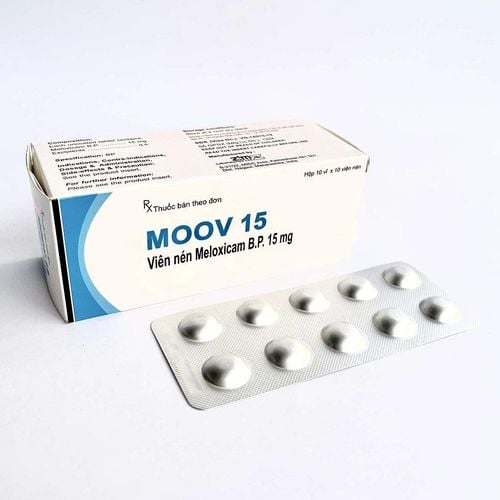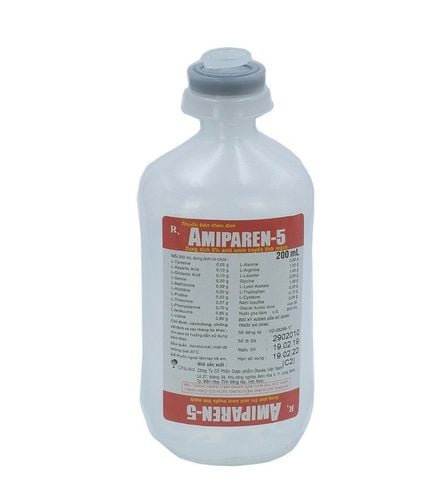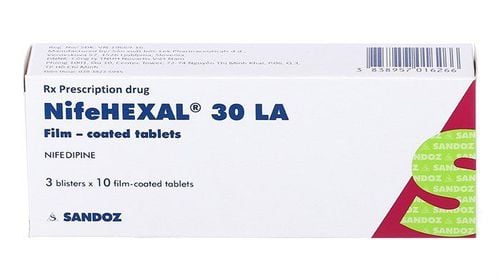This is an automatically translated article.
Sinus tachycardia is an arrhythmia that occurs due to the sinus node in the atria, which can be physiological or pathological. Most patients do not have serious symptoms and do not have much impact on health. Let's find out what sinus tachycardia is and can it be cured in the article below.
1. What is sinus tachycardia?
The sinus node, also known as the right atrium, when operating a full cycle will create a heartbeat based on electrical signals. For a healthy person with normal sinus node function, the sinus rhythm and heart rate will be regular and normal with a frequency of 60-100 times/minute. In contrast, sinus tachycardia is a medical condition where the sinus node is abnormally stimulated leading to heart palpitations, palpitations, palpitations, and shortness of breath. Sinus tachycardia when the ECG shows sinus rhythm with a rate above 100 beats/min. Sinus tachycardia, although difficult to treat, can be controlled with a combination of treatments.
2. Causes of sinus tachycardia
Sinus tachycardia is caused by the sinus node being stimulated by physiological or pathological causes such as:
Physical activity. Anxiety, stress, over-joy. Age: Children have a faster heart rate than adults. Gender: Women have a faster heart rate than men. Pregnant women. Trigger factors such as: hot weather, alcohol, tea, tobacco, coffee,... Medicines: corticosteroids, medicines for bronchial asthma, anti-inflammatory drugs, antihypertensive drugs, medicines to treat arrhythmias ,... Non-cardiac diseases such as fever, infection, anemia, hypovolemia, hyperthyroidism, hypotension, electrolyte disturbances, respiratory diseases, neurological, endocrine, metabolic, ... Heart disease such as heart failure, cardiac tamponade, ischemic heart disease, congenital heart disease, heart valve disease, ...
3. Symptoms of sinus tachycardia
Sinus tachycardia in young and otherwise healthy adults is usually asymptomatic because the disorder is not serious. Sinus tachycardia is discovered incidentally during routine physical examination or related medical examination.
In children, respiratory sinus arrhythmias are typically characterized by a change in heart rate during breathing with an increase in heart rate on inspiration and a decrease on expiration. In the elderly, sinus tachycardia often has quite obvious symptoms such as:
Angina, palpitations, shortness of breath, fatigue, these can be early signs of sudden death. Myocardial ischemia, sudden death Heart rate is too slow or too fast, can cause blood to nourish the body to decrease, manifested by symptoms such as memory impairment, instability, language disorder, dizziness, fainting, ... Patients need to go to the hospital to check when detecting abnormally fast, pounding heart, especially when this condition occurs many times. Sometimes, these can be signs of a medical condition or other underlying health problem.
Although most sinus tachycardia is benign, it can still be serious and cause many dangerous complications such as dizziness, chest pain, sudden death,...
4. Diagnosis of sinus tachycardia
Diagnosis of sinus tachycardia based on echocardiography and electrocardiogram. Sinus tachycardia can have an episodic onset, so it is important to record the ECG at this time, if not recorded at the wrong time will lead to misdiagnosis. So to get accurate heart rate results, Holter heart rate monitor is usually set up and records heart rate for 2 - 48 hours.
More important, however, is the diagnosis and treatment of the cause of sinus tachycardia. Therefore, patients need to be examined immediately when they have symptoms such as frequent and frequent palpitations, shortness of breath, chest pain, dizziness, dizziness,...
Differential diagnosis:
Atrial fibrillation. Ventricular fibrillation. Supraventricular tachycardia. Heart block.
5. Can sinus tachycardia be cured?
To treat sinus tachycardia, it is necessary to determine the cause and intervene with appropriate methods.
If sinus tachycardia is not too serious, the patient just needs to monitor and take good care of his or her health, the symptoms will improve. However, it is necessary to treat existing heart diseases.
Sinus tachycardia caused by drugs, stimulants: Without using stimulants, the doctor will consider stopping the drug, reducing the dose, changing the drug or continuing to take the drug you are using.
Sinus tachycardia due to cardiac and noncardiac diseases: treating the cause will help stabilize the heart rate.
Sinus tachycardia is not an acutely dangerous disease, but patients should not be subjective, should closely monitor symptoms and consult a doctor promptly if there are abnormalities, do not arbitrarily use drugs slow heart rate.
6. How to reduce sinus tachycardia at home
Treatment of sinus tachycardia is not just medication or surgery (pacemaker placement, electrocardiogram,...). Patients need lifestyle changes to reduce the stimulation to sinus rhythm from inside and outside the body.
6.1. Follow a heart-healthy diet A healthy diet will help stabilize sinus rhythm and prevent other cardiovascular diseases such as coronary artery disease, hypertension, dyslipidemia,...Foods Good for the heart such as:
Fiber-rich foods: Fiber helps absorb bad cholesterol (causes atherosclerosis, increases heart rate). Foods that contain a lot of fiber are citrus fruits, lemons, berries, spinach, cauliflower, carrots, ... Omega-3 rich foods: Omega-3 is to help reduce reactions inflammation in the blood vessels, reducing sinus tachycardia. Eating fish twice a week will help the body get enough omega-3. Other foods such as soybeans, peanuts, walnuts, almonds, etc. also contain a lot of omega-3. Antioxidant-rich foods: Helps prevent free radical formation, reduces atrial fibrillation, is found in citrus fruits, olive oil, soybeans, dark green vegetables, whole grains, cauliflower ,... Food containing electrolytes such as magnesium, potassium, calcium found in bananas, spinach, pumpkin, almonds, eggs, skim milk, ... is an effective way to help stabilize the heart rate. In addition, should avoid spicy foods, red meat, poultry skin, caffeinated drinks such as tea, coffee, alcohol because they stimulate the heart rate increase.
6.2. Moderate exercise Patients with sinus tachycardia are encouraged to exercise. When starting to exercise, the patient should do gentle, moderate movements, then gradually increase the intensity to avoid excessive sinus rhythm.
Start with 5 or 10 minutes of walking and gradually increase the intensity after that. The best walking time is 30-45 minutes/day, at least 5 days/week.
Yoga and tai chi movements are very good for health if maintained regularly for 30 - 60 minutes a day.
It should be noted that during exercise, if symptoms of palpitations and palpitations appear, you should stop, sit down and rest.
Please dial HOTLINE for more information or register for an appointment HERE. Download MyVinmec app to make appointments faster and to manage your bookings easily.













